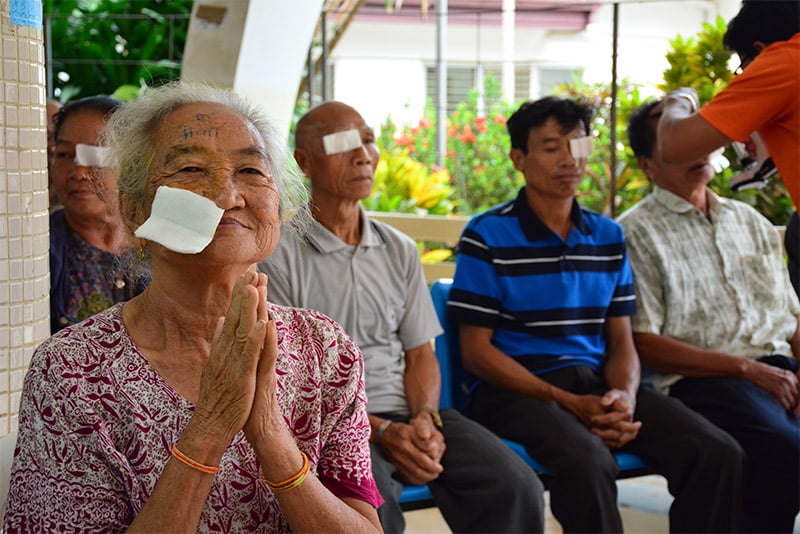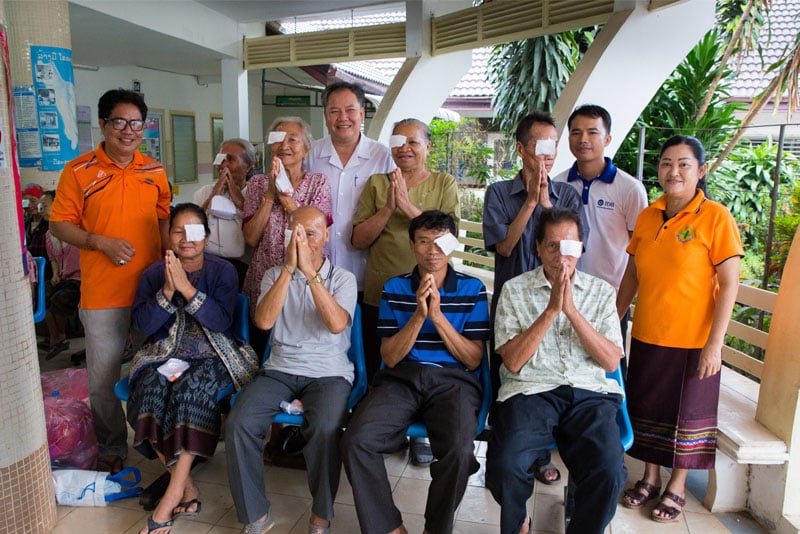Inside an eye camp in Laos

A LOOK AT EYE HEALTH IN REMOTE AREAS
An outreach eye camp can be a lively event, especially in a populous rural community like Vang Vieng in Laos.
Picture a crowd of people, many with friends and family in tow, converging on a small hospital over the space of just a few days.
Some will travel for hours to get there. Others might live just down the road. All of them will be unsure of what to expect - hopeful that someone here will be able to help with the vision problems they are having. Over the next few days, all of these people will be cared for as part of a whirlwind eye treatment intensive.

Vang Vieng Hospital bas been hosting such outreach eye camp with The Fred Hollows Foundation. This is part of The Fred Hollows Foundation's Sustainable Comprehensive Eye Care Project, which is supported by the Australian Governmanet through the Australian NGO Cooperation Program (ANCP).
With a largely rural population and mountainous landscape, the country faces unique challenges in linking eye health services to people living in remote areas.

It’s not even six in the morning when the team of doctors and nurses start arriving, and the day is already becoming hot and humid.
Dr Chanpheng, who heads Vientiane Province’s eye unit, leads the group. She is the only female provincial eye unit leader in the country.
The team starts setting up, preparing for three days that will change the lives of many. As the morning heats up a stream of people start to arrive.

One of these people is 85-year-old Joun. He walks into the hospital gingerly, assisted by his daughter-in-law, Noy. Joun is blind, and has been for a year. He now needs assistance from family to walk, and can no longer contribute to his household by working in the rice paddy fields.
The nurses here screen over a hundred people. In the afternoon, patients like Joun are operated on. The eye surgeons set up and remove cataract after cataract, each operation taking less than 30 minutes.
All the patients who are operated on spend the evening in the hospital. We return to the eye camp the next morning, where the doctors will remove everyone’s eye patches to see whether the surgeries were successful.
Following his surgery, when Joun’s patches are removed, and the doctor reminds Noy to read the prescription to her father-in-law when they return home. Joun interrupts with enthusiasm: “They don’t need to. I can read now!”

The people who attend these eye camps are often nervous, but always grateful. Like 83 year-old Junti, who arrives at the camp surrounded by family, including a few of her 18 grandchildren.
Junti has cataract in one eye and is worried that she will become a burden to her family. She relaxes as the eye surgeon talks her through the process, and less than 15 minutes after surgery she is up, smiling and thanking every person in the room. “I’m beautiful as I always was,” she laughs.

One couple actually first met on the street just outside the hospital, during the Laotian Civil War between the 1950s and the late 1970s. Chue Cha and Ong Yang were returning because Chu Cha had developed cataract in both eyes.
"He was very worried that he could not see again," his wife says. When we meet him again after surgery, he is all smiles.

At the end of the three days, Dr Chanpheng says she is pleased to see so many patients attending Vang Vieng Hospital for screening and surgery. “Now the people understand about eye care and know where to go to find help.”
As soon as her team finishes removing the day’s patches, they head off to the next district where more patients are waiting to have their sight restored.
The work goes on for Dr Chanpheng and her team of sight-savers. If you’d like to support that work, please make a donation here.

GIVE THE GIFT OF SIGHT
Imagine not being able to access the basic eye care needed to lead your life. There are millions of people throughout the world who live like this. Vision impairment and blindness can affect every aspect of one's life; school, work, relationships, and basic human rights.
The Fred Hollows Foundation is an ally to these people. We provide basic eye care services, ensuring that hundreds of thousands of people have their lives transformed every single year.
Please, consider being a part of this life-changing humanitarian movement, and donate today.
